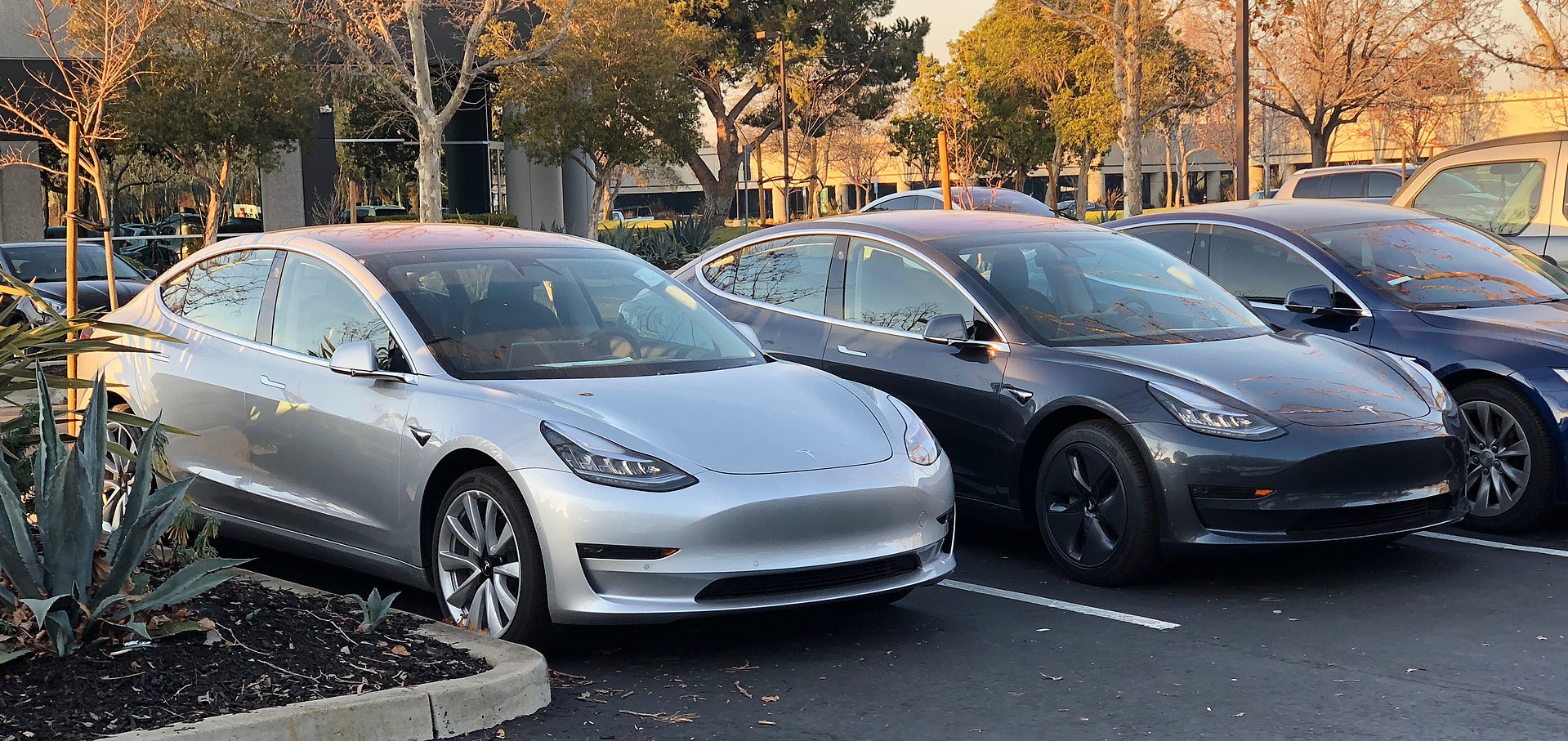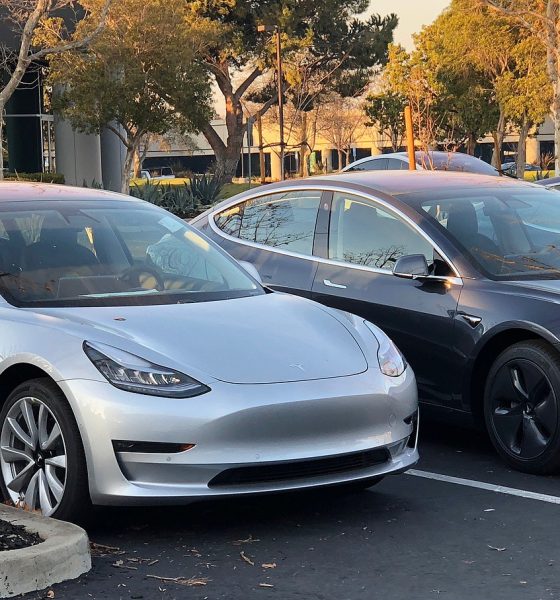

News
Tesla delivers its 200,000th car, triggering the EV tax credit phase-out period
Tesla has delivered its 200,000th vehicle this month, triggering the phase-out period of the $7,500 federal tax credit for electric vehicles offered in the United States.
As seen on Tesla’s official Electric Vehicle Incentives page, the phase-out period for the $7,500 federal tax credit is in effect for all Model S, Model X and Model 3 vehicles delivered on or before December 31, 2018, while buyers taking delivery in 2019 will only be eligible for a subset of that original $7,500 credit. Customers taking delivery between January 1 to June 30, 2019 will be eligible for a $3,750 federal tax credit, or half of the full amount before phase-out. Those taking delivery in the second half of 2019, between July 1 to December 31, 2019 will be eligible for a $1,875 federal tax credit.
The federal credit applied to new electric vehicles, dubbed by the IRS as the Plug-In Electric Drive Vehicle Credit (IRC 30D), affects all EVs that were acquired after December 31, 2009. The credit, which took effect during the previous administration as a means to encourage drivers to adopt zero-emissions vehicles, featured a tiered credit, starting at $2,500 and going all the way up to $7,500 depending on the battery capacity of an electric car. The IRS’ official website describes how the sale of a manufacturer’s 200,000th electric car triggers the tax credit phase-out period.
“The qualified plug-in electric drive motor vehicle credit phases out for a manufacturer’s vehicles over the one-year period beginning with the second calendar quarter after the calendar quarter in which at least 200,000 qualifying vehicles manufactured by that manufacturer have been sold for use in the United States (determined on a cumulative basis for sales after December 31, 2009) (‘phase-out period’).”
Tesla actually played its cards cleverly with regards to the $7,500 tax credit phase-out. Being a car company that exclusively manufactures electric cars, it was inevitable that the company would be the first automaker to hit the 200,000 mark. By reaching this milestone shortly after the second quarter, Tesla actually gave itself, as well as its customers, an additional 18 months to obtain any sort of credit. the $7,500 credit remains in effect for the whole quarter in which the 200,000th vehicle was delivered, as well as the quarter after.
After this point, the credit gets reduced by 50% to $3,750 for two quarters. In Tesla’s case, this corresponds to Q1 and Q2 2019. From Q3 and Q4 2019, Tesla’s vehicles will still be eligible for a tax credit, though it would be reduced to $1,875 by this time. Tesla’s electric cars produced from January 2020 moving forward will not be eligible for tax credits anymore.
In a way, Tesla’s timing for hitting the 200,000 mark appears to be strategic. The company, after all, just recently managed to attain its goal of producing 5,000 Model 3 per week by the end of Q2 2018. Signs from the company, such as test drives for the Model 3, massive batches of new VINs filed one after another, and a new 5-minute Sign & Drive delivery system, all seem designed to deliver as many of the electric cars to customers as fast as possible.
If there is a group of reservation holders that would feel the effect of the credit phase-out, however, it would be those holding out for the Standard Range RWD Model 3, which starts at $35,000. In a Twitter update, Elon Musk stated that Tesla would likely start the production of the base Model 3’s smaller battery pack by the end of 2018. From there, Musk noted that volume production for the vehicle would probably begin in Q1 2019.
In a meeting with investors and analysts this past Tuesday, Tesla’s Senior Director of Investor Relations Aaron Chew reportedly stated that the company is aiming to sustain its 5,000 per week pace for Q3 2018, increasing output to 7,000 cars per week for Q4 2018. By mid-2019, Tesla expects to produce 10,000 Model 3 per week, which corresponds to an output of 500,000 vehicles per year.
If Tesla manages to sustain its 5,000 Model 3 per week rate from August to September 2018, and achieve a steady rate of 7,000 vehicles per week from October 2018 to June 2019 (assuming no production ramps happen within these months), the company would be able to produce 292,000 Model 3. With a 10,000 per week rate from July to December 2019, Tesla would be able to deliver an additional 240,000 more. Thus, if Tesla plays its cards right and ramps the Model 3 in a manner that is careful and precise, it could deliver as many as 532,000 cars that are still eligible for federal credit (albeit the $3,750 and $1,875 credit). Considering that the backlog of 420,000 remaining Model 3 orders are from customers across the globe, there is a good chance that all present reservation holders in the United States would be able to get a credit for their vehicle.

Elon Musk
Elon Musk’s X will start using a Tesla-like software update strategy
The initiative seems designed to accelerate updates to the social media platform, while maintaining maximum transparency.

Elon Musk’s social media platform X will adopt a Tesla-esque approach to software updates for its algorithm.
The initiative seems designed to accelerate updates to the social media platform, while maintaining maximum transparency.
X’s updates to its updates
As per Musk in a post on X, the social media company will be making a new algorithm to determine what organic and advertising posts are recommended to users. These updates would then be repeated every four weeks.
“We will make the new 𝕏 algorithm, including all code used to determine what organic and advertising posts are recommended to users, open source in 7 days. This will be repeated every 4 weeks, with comprehensive developer notes, to help you understand what changed,” Musk wrote in his post.
The initiative somewhat mirrors Tesla’s over-the-air update model, where vehicle software is regularly refined and pushed to users with detailed release notes. This should allow users to better understand the details of X’s every update and foster a healthy feedback loop for the social media platform.
xAI and X
X, formerly Twitter, has been acquired by Elon Musk’s artificial intelligence startup, xAI last year. Since then, xAI has seen a rapid rise in valuation. Following the company’s the company’s upsized $20 billion Series E funding round, estimates now suggest that xAI is worth tens about $230 to $235 billion. That’s several times larger than Tesla when Elon Musk received his controversial 2018 CEO Performance Award.
As per xAI, the Series E funding round attracted a diverse group of investors, including Valor Equity Partners, Stepstone Group, Fidelity Management & Research Company, Qatar Investment Authority, MGX, and Baron Capital Group, among others. Strategic partners NVIDIA and Cisco Investments also continued support for building the world’s largest GPU clusters.
News
Tesla FSD Supervised wins MotorTrend’s Best Driver Assistance Award
The decision marks a notable reversal for the publication from prior years, with judges citing major real-world improvements that pushed Tesla’s latest FSD software ahead of every competing ADAS system.

Tesla’s Full Self-Driving (Supervised) system has been named the best driver-assistance technology on the market, earning top honors at the 2026 MotorTrend Best Tech Awards.
The decision marks a notable reversal for the publication from prior years, with judges citing major real-world improvements that pushed Tesla’s latest FSD software ahead of every competing ADAS system. And it wasn’t even close.
MotorTrend reverses course
MotorTrend awarded Tesla FSD (Supervised) its 2026 Best Tech Driver Assistance title after extensive testing of the latest v14 software. The publication acknowledged that it had previously criticized earlier versions of FSD for erratic behavior and near-miss incidents, ultimately favoring rivals such as GM’s Super Cruise in earlier evaluations.
According to MotorTrend, the newest iteration of FSD resolved many of those shortcomings. Testers said v14 showed far smoother behavior in complex urban scenarios, including unprotected left turns, traffic circles, emergency vehicles, and dense city streets. While the system still requires constant driver supervision, judges concluded that no other advanced driver-assistance system currently matches its breadth of capability.
Unlike rival systems that rely on combinations of cameras, radar, lidar, and mapped highways, Tesla’s FSD operates using a camera-only approach and is capable of driving on city streets, rural roads, and freeways. MotorTrend stated that pure utility, the ability to handle nearly all road types, ultimately separated FSD from competitors like Ford BlueCruise, GM Super Cruise, and BMW’s Highway Assistant.
High cost and high capability
MotorTrend also addressed FSD’s pricing, which remains significantly higher than rival systems. Tesla currently charges $8,000 for a one-time purchase or $99 per month for a subscription, compared with far lower upfront and subscription costs from other automakers. The publication noted that the premium is justified given FSD’s unmatched scope and continuous software evolution.
Safety remained a central focus of the evaluation. While testers reported collision-free operation over thousands of miles, they noted ongoing concerns around FSD’s configurable driving modes, including options that allow aggressive driving and speeds beyond posted limits. MotorTrend emphasized that, like all Level 2 systems, FSD still depends on a fully attentive human driver at all times.
Despite those caveats, the publication concluded that Tesla’s rapid software progress fundamentally reshaped the competitive landscape. For drivers seeking the most capable hands-on driver-assistance system available today, MotorTrend concluded Tesla FSD (Supervised) now stands alone at the top.
News
Elon Musk’s Grokipedia surges to 5.6M articles, almost 79% of English Wikipedia
The explosive growth marks a major milestone for the AI-powered online encyclopedia, which was launched by Elon Musk’s xAI just months ago.

Elon Musk’s Grokipedia has grown to an impressive 5,615,201 articles as of today, closing in on 79% of the English Wikipedia’s current total of 7,119,376 articles.
The explosive growth marks a major milestone for the AI-powered online encyclopedia, which was launched by Elon Musk’s xAI just months ago. Needless to say, it would only be a matter of time before Grokipedia exceeds English Wikipedia in sheer volume.
Grokipedia’s rapid growth
xAI’s vision for Grokipedia emphasizes neutrality, while Grok’s reasoning capabilities allow for fast drafting and fact-checking. When Elon Musk announced the initiative in late September 2025, he noted that Grokipedia would be an improvement to Wikipedia because it would be designed to avoid bias.
At the time, Musk noted that Grokipedia “is a necessary step towards the xAI goal of understanding the Universe.”
Grokipedia was launched in late October, and while xAI was careful to list it only as Version 0.1 at the time, the online encyclopedia immediately earned praise. Wikipedia co-founder Larry Sanger highlighted the project’s innovative approach, noting how it leverages AI to fill knowledge gaps and enable rapid updates. Netizens also observed how Grokipedia tends to present articles in a more objective manner compared to Wikipedia, which is edited by humans.
Elon Musk’s ambitious plans
With 5,615,201 total articles, Grokipedia has now grown to almost 79% of English Wikipedia’s article base. This is incredibly quick, though Grokipedia remains text-only for now. xAI, for its part, has now updated the online encyclopedia’s iteration to v0.2.
Elon Musk has shared bold ideas for Grokipedia, including sending a record of the entire knowledge base to space as part of xAI’s mission to preserve and expand human understanding. At some point, Musk stated that Grokipedia will be renamed to Encyclopedia Galactica, and it will be sent to the cosmos.
“When Grokipedia is good enough (long way to go), we will change the name to Encyclopedia Galactica. It will be an open source distillation of all knowledge, including audio, images and video. Join xAI to help build the sci-fi version of the Library of Alexandria!” Musk wrote, adding in a later post that “Copies will be etched in stone and sent to the Moon, Mars and beyond. This time, it will not be lost.”










